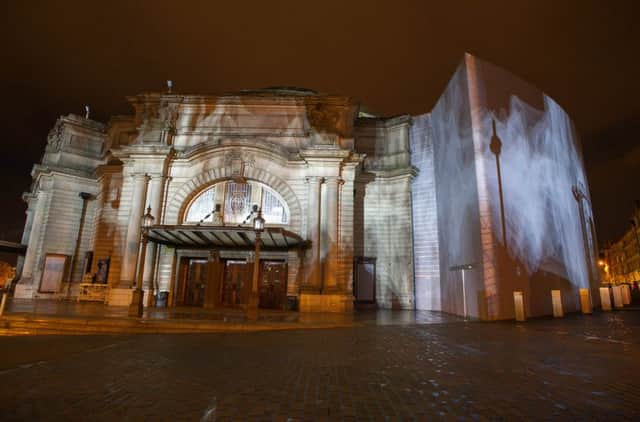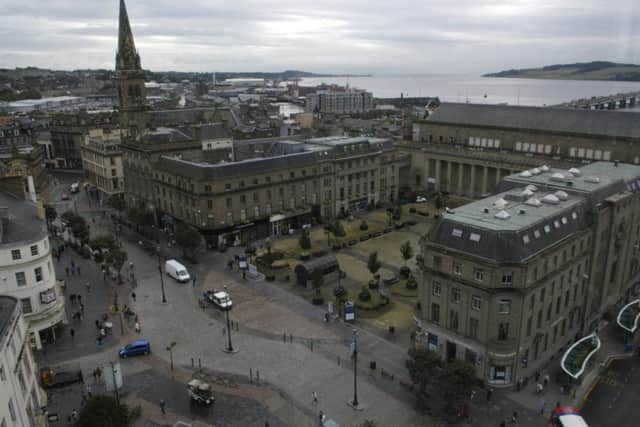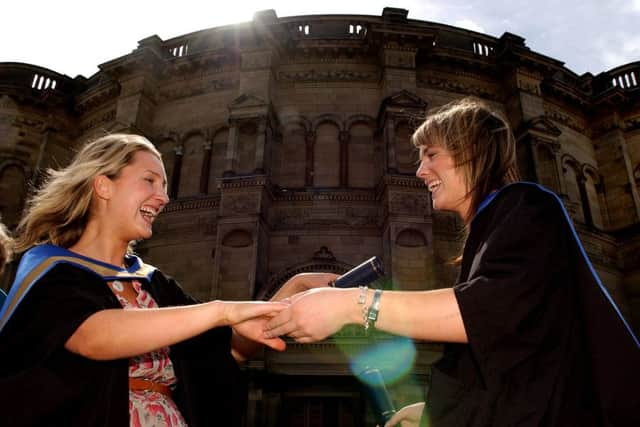Five incredible buildings paid for by donations


Usher Hall, Edinburgh
Andrew Usher never got to see the concert hall that bears his name. His family business was whisky blending and its huge success made him a very wealthy man long before his death in 1898. Usher’s will bequeathed £100,000 to his home city with which to build a world-class performance space for music. The search for a suitable site proved problematic, and a former Lothian Road school was eventually demolished to make space for the project. Following an open design competition, the winning entry was by the Leicester-based architectural firm Stockdale Harrison and Howard H Thomson. Work on the hall finally got underway in 1911 after the foundation stone was laid by King George V and Queen Mary. The building’s innovative curved design is said to reflect a contemporary backlash against the once prevailing Victorian Gothic style. A substantial renovation of the venue was carried out from 2007-2009, including the construction of a new glass wing.
Caird Hall, Dundee


The city once known for jute, jam and journalism today produces much of the latter but none of the former. One surviving legacy of the jute industry is the Caird Hall, which has dominated central Dundee since its opening in 1923. Funding for this impressive concert hall was granted by noted philanthropist Sir James Key Caird, who made his fortune from mills based in the city. Between 1895 and 1914, Caird gave £240,940 in donations to various good causes.
Mitchell Library, Glasgow
Advertisement
Hide AdAdvertisement
Hide AdGlasgow’s famous library takes its name from the Mitchell family tobacco business which was first established in the West Lothian town of Linlithgow in 1723. The last of the tobacco dynasty, Stephen Mitchell, died without leaving an heir in 1874. He left £66,998 in his will - the equivalent of £5 million today - for the express purpose of building and stocking a public reference library in Glasgow, the city in which his firm had prospered. The first Mitchell Library was opened on the first floor of an Ingram Street tenement in 1877, before moving to Miller Street in 1891. The Mitchell’s present home at Charing Cross, designed by William B. White, opened in 1911. The statue on top of the library’s distinctive dome represents literature - not the Greek goddess Minerva – and was designed by the Borders sculptor Thomas Clapperton and modelled by Teresa Mackenzie, who was also the model for Britannia on pre-decimal coinage. The Mitchell prides itself as being one of the largest public lending libraries in Europe, with more than two million items in stock.
McEwan Hall, Edinburgh


The irony of a student graduation hall being paid for by a brewer is not lost on those fortunate enough to receive their degrees at this University of Edinburgh venue. William McEwan, sometime MP for Edinburgh and owner of the Fountain Brewery, paid the £115,000 construction cost and presented the building to the university in 1894. Designed in the Italian Renaissance style by Robert Rowand Anderson, it hosts hundreds of public events each year in addition to graduations.
Christian Institute, Glasgow
Not all landmark buildings from the golden era of late Victorian and Edwardian philanthropy survive. The Christian Institute, an extravagant Gothic behemoth that occupied an entire block between Bothwell Street and Bythswood Street, was demolished in 1980. It was largely built a century earlier, financed by the Rutherglen chemical manufacturer and philanthropist James White, with later additions. The vast building housed a bible school, meeting rooms, a library and a YMCA centre, but the cost of its upkeep became prohibitive over time. It was sold by the Glasgow United Evangelistic Association in the late 1970s to a property developer, which promptly flattened it. A rather dull office block now occupies the site.